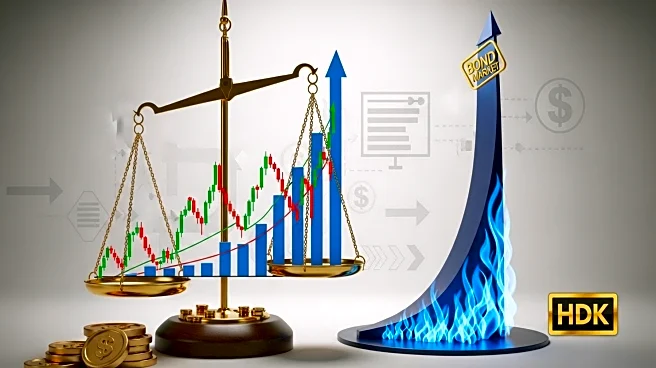What's Happening?
The U.S. dollar has declined against major currencies as bond markets stabilize and traders anticipate key U.S. jobs data. The dollar index, which tracks the greenback against a basket of currencies, dipped 0.2% to 98.018. This comes amid higher-than-expected U.S. jobless claims and expectations for a weak nonfarm payrolls report. The Federal Reserve is expected to cut interest rates at its upcoming meeting, with traders pricing in a near-100% chance of a rate cut. The dollar's performance is also influenced by recent U.S. policy decisions, including tariff adjustments on Japanese imports.
Why It's Important?
The dollar's decline and the anticipated Federal Reserve rate cut reflect broader economic concerns, including labor market weaknesses and global trade tensions. A weaker dollar can impact U.S. exports by making them more competitive abroad, but it also affects import prices and inflation. The Federal Reserve's actions will be closely watched as they could influence global financial markets and economic growth. The situation underscores the interconnectedness of global economies and the impact of U.S. monetary policy on international trade and investment.
What's Next?
The upcoming U.S. jobs report will be a critical indicator for the Federal Reserve's policy decisions. Market participants will be looking for signs of economic stability or further deterioration. The Fed's meeting on September 16-17 will be pivotal, with potential implications for interest rates and economic growth. Additionally, global markets will be monitoring U.S. trade policies and their impact on international relations and economic performance.











